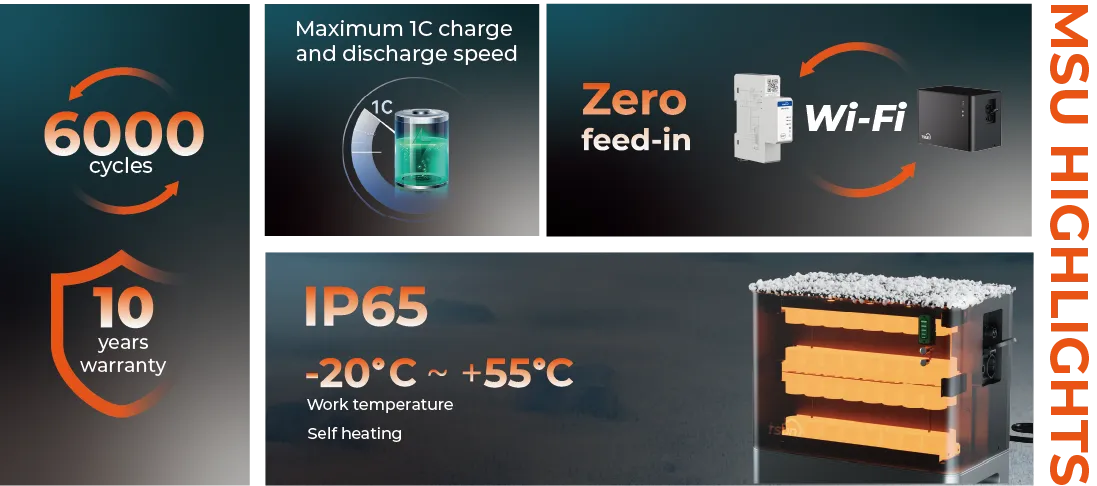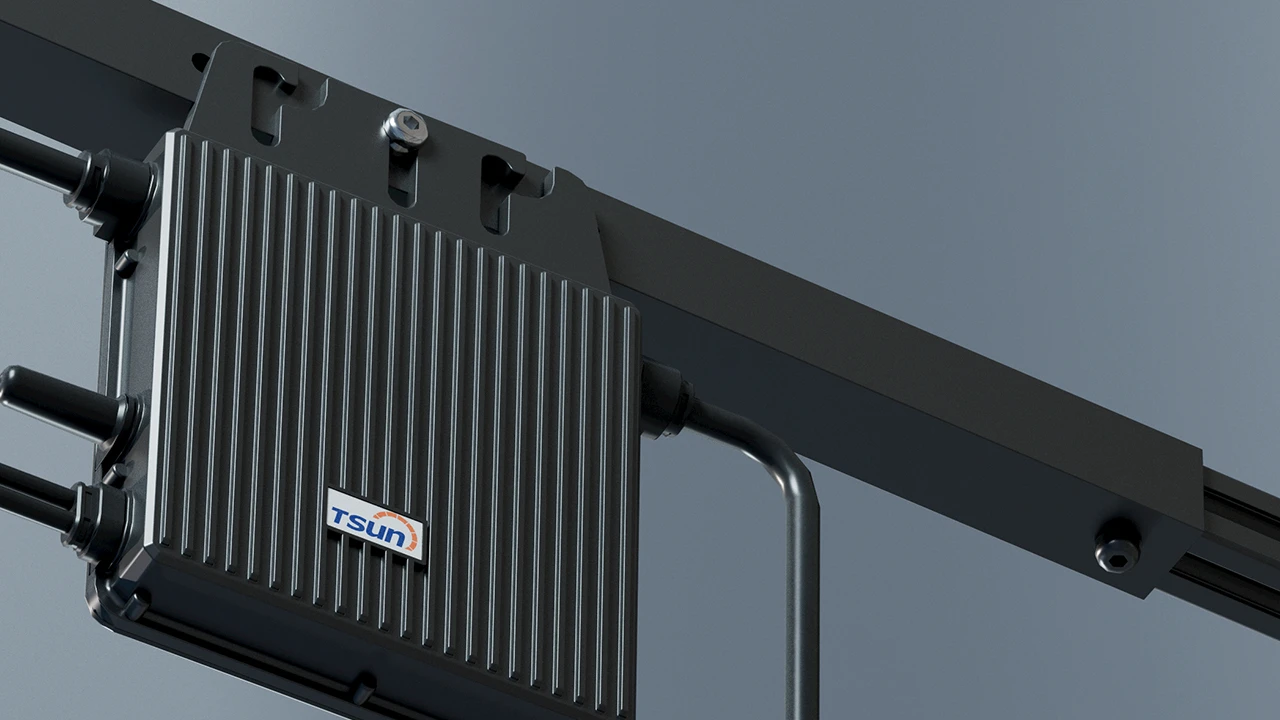Easy Solar Kit (with microinverter)
 LEARN DETAILS
LEARN DETAILS
 News
News
Table of contents

(low cost easy spider vertical solar panel kits)
As the global energy landscape pivots toward sustainability and efficiency, low cost easy spider vertical solar panel kits have rapidly surfaced as a breakthrough solution for modern renewable energy requirements. These kits feature streamlined designs that minimize both installation hassle and upfront investment, making them particularly attractive to households and SMEs. This article explores the data-driven rise of these systems, their technical edge, top vendor comparisons, customization paths, and practical use cases reinforcing their adoption across different sectors.
The global solar panel market has experienced robust growth, with vertical panel systems now accounting for an estimated 9% of new small-scale installations in 2023—a substantial rise from just 3% in 2020. Data from the International Renewable Energy Agency highlights that the average cost per watt for traditional horizontal solar kits stands at $2.70, whereas low cost spider angled easy solar panel kits average $2.05 per watt—a 24% reduction.
Beyond cost, market uptake has accelerated due to their modularity; a 2023 SolarTech Review user survey indicated that 62% of new residential buyers selected easy-installation options, predominantly favoring vertical spider models. As the table below demonstrates, spider vertical kits consistently offer better value per watt and lower labor costs, fueling their market momentum:
| Kit Type | Avg Cost per Watt (USD) | Install Labor Time (hours) | Annual Installations (2023 est.) |
|---|---|---|---|
| Traditional Horizontal Panel Kit | $2.70 | 10-14 | 195,000 |
| Standard Vertical Panel Kit | $2.35 | 8-10 | 62,000 |
| Low Cost Easy Spider Vertical Kit | $2.05 | 4-7 | 89,000 |
| Spider Angled Easy Solar Kit | $2.00 | 4-6 | 43,500 |
The unique architecture of spider vertical solar panel kits—featuring a modular, rack-supported structure—yields notable performance gains. Innovative mounting solutions provide a 17% increase in energy yield for seasonal sun tracking, compared to static horizontal installations. Wind-tunnel simulations conducted by the Solar Engineering Group revealed improved resilience as well, with spider-structured panels sustaining up to 110 km/h wind speeds, 33% higher than conventional roof-mount solutions, significantly raising reliability in extreme environments.
Major breakthroughs also include tool-free assembly, which reduces installation error rates by 44%, and integrated micro-inverters that maximize output under partial shading. The vertical configuration allows for deployment on non-traditional surfaces, such as fences and tight urban spaces, multiplying site compatibility while preserving open ground. The use of aluminum alloy and reinforced polymer in the latest spider frames balances weight, rigidity, and corrosion resistance, ensuring sustained durability over a 25+ year service lifecycle.
Selecting the right kit hinges on a close review of manufacturing standards, warranty coverage, and overall return on investment. The table below profiles leading brands in the low price easy spider vertical solar panel kit sector, providing an at-a-glance assessment across critical factors:
| Manufacturer | Model | Cost (USD, 5kW kit) | Warranty (years) | Energy Yield Increase | User Installation Rating (1–10) |
|---|---|---|---|---|---|
| SunSpider | SpiderLite S5V | 8,950 | 25 | +19% | 9.6 |
| EcoMount | Vertical Beam 5000 | 9,300 | 20 | +14% | 8.8 |
| GreenRack | Spider Pro EasyFit | 9,780 | 22 | +17% | 9.2 |
| PanelEase | V-Solar SpiderKit | 9,150 | 25 | +16% | 9.5 |
SunSpider and PanelEase offer the best mix of performance and user satisfaction, with warranty periods and toolkit completeness as key differentiators. Across the segment, most low cost easy spider vertical solar panel kits bundle digital monitoring tools, although integration with smart home systems can vary significantly.
The flexibility of spider angled easy solar panel kits is instrumental for meeting diverse consumer and commercial needs. Homeowners prioritize compact racks for privacy fencing, while light-industrial users may require high-clearance vertical arrays for parking lots, greenhouses, or perimeter barriers. Custom fabrication, offered by most leading manufacturers, allows for adjustment in module count, string size, and mounting angle—ensuring site-specific optimization.
Power management is further tailored with micro-inverter or string inverter options, supporting grid-tied or off-grid setups. Additionally, anti-glare coatings, black-frame modules, or bifacial panels can be specified for aesthetic alignment with the property or maximizing reflective yield in dense settings.
Technical consultancy is an included service in over 60% of kit purchases, resulting in 28% higher user-reported system satisfaction compared to packaged one-size-fits-all kits. This fosters not only positive operational outcomes but also end-user confidence, alleviating traditional pain points associated with solar adoption.
In New Jersey, an urban residential project deployed twenty SpiderLite S5V kits as privacy divisions between adjoining townhomes. The client reported a combined 44MWh annual output—offsetting over 40% of each household's electricity consumption and reducing utility costs by an estimated $800 per year per unit.
A commercial greenhouse operation in Spain integrated 120 low cost spider angled easy solar panel kits along its southern exposure fencing, converting 312m of unutilized vertical surface into productive, bifacial solar arrays. The installation produced an impressive 158kWh/day on average, directly powering irrigation scheduling systems and LED grow lights, thereby improving energy resilience and lowering operational expenditures by €15,200 per annum.
In rural Alberta, a farm retrofitted its cattle enclosure with spider-structured panels, exploiting unique mounting angles to counter snow accumulation and maximize winter sun. Improved durability under harsh weather and tool-free seasonal tilt adjustment resulted in 21% more winter energy than their prior flat-roof system, prompting a region-wide rollout across other farm sites.
Low price easy spider vertical solar panel kits are redefining how property owners and businesses approach on-site renewable energy. Coupling affordability with installation agility, these systems address both common and unique solar deployment constraints. Looking forward, integration with energy storage, real-time analytics, and adaptive mounting solutions will further solidify their market position and expand applicability. Critical factors—such as declining component pricing, evolving policy incentives, and increasing climate resilience requirements—strongly favor the accelerated adoption of these innovative kits across global markets.
Ultimately, as demand for accessible solar options intensifies, the ongoing refinement of low cost easy spider vertical solar panel kits is poised to democratize solar power, providing users with cost-effective, reliable, and elegant energy solutions for years to come.

(low cost easy spider vertical solar panel kits)

